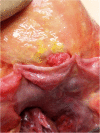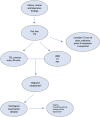Cardiac Tumors: Diagnosis, Prognosis, and Treatment
- PMID: 33040219
- PMCID: PMC7547967
- DOI: 10.1007/s11886-020-01420-z
Cardiac Tumors: Diagnosis, Prognosis, and Treatment
Abstract
Purpose of review: Cardiac masses frequently present significant diagnostic and therapeutic clinical challenges and encompass a broad set of lesions that can be either neoplastic or non-neoplastic. We sought to provide an overview of cardiac tumors using a cardiac chamber prevalence approach and providing epidemiology, imaging, histopathology, diagnostic workup, treatment, and prognoses of cardiac tumors.
Recent findings: Cardiac tumors are rare but remain an important component of cardio-oncology practice. Over the past decade, the advances in imaging techniques have enabled a noninvasive diagnosis in many cases. Indeed, imaging modalities such as cardiac magnetic resonance, computed tomography, and positron emission tomography are important tools for diagnosing and characterizing the lesions. Although an epidemiological and multimodality imaging approach is useful, the definite diagnosis requires histologic examination in challenging scenarios, and histopathological characterization remains the diagnostic gold standard. A comprehensive clinical and multimodality imaging evaluation of cardiac tumors is fundamental to obtain a proper differential diagnosis, but histopathology is necessary to reach the final diagnosis and subsequent clinical management.
Keywords: Cardiac tumors; Cardio-oncology; Histopathology; Masses; Multimodality imaging; Neoplastic tumors.
Conflict of interest statement
The authors declare that they have no conflict of interest.
Figures






References
-
- International Agency for Research on Cancer. WHO Classification of Tumours of the Lung, Pleura, Thymus and Heart 4th edn (World Health Organization, 2015).
-
- Basso C, Valente M, Poletti A, Casarotto D, Thiene G. Surgical pathology of primary cardiac and pericardial tumors. Eur J Cardiothorac Surg. 1997;12:730–737. - PubMed
-
- Ekmektzoglou KA, Samelis GF, Xanthos T. Heart and tumors: location, metastasis, clinical manifestations, diagnostic approaches and therapeutic considerations. J Cardiovasc Med (Hagerstown) 2008;9:769–777. - PubMed
-
- Oliveira GH, Al-Kindi SG, Hoimes C, Park SJ. Characteristics and survival of malignant cardiac tumors: a 40-year analysis of > 500 patients. Circulation. 2015;132:2395–2402. - PubMed
-
- Simpson L, Kumar SK, Okuno SH, Schaff HV, Porrata LF, Buckner JC, Moynihan TJ. Malignant primary cardiac tumors: review of a single institution experience. Cancer. 2008;112:2440–2446. - PubMed
Publication types
MeSH terms
LinkOut - more resources
Full Text Sources
Medical
Research Materials
Miscellaneous

